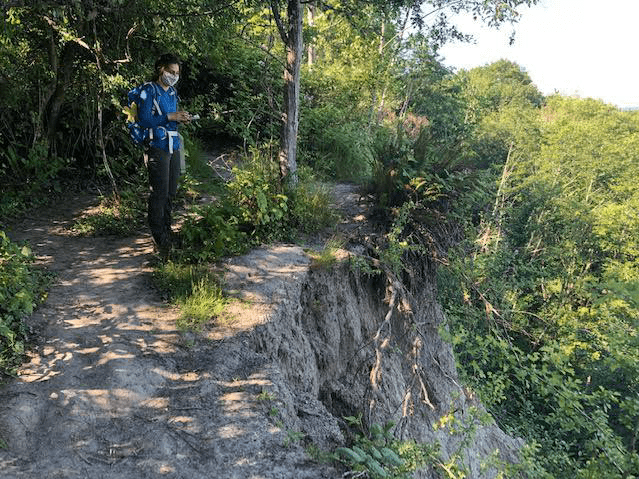

Erosion and instability along Discovery Park’s bluffs have been ongoing for years, as any park visitor will notice when walking along the fenced-off viewpoint trails. This week the University of Washington’s Department of Earth and Space Sciences will begin a long-term study to determine just how fast the bluffs are slipping away. Many factors contribute to the instability of the North and South bluffs at Discovery Park, such as precipitation, steep slopes, and underlying geology. With climate change also expected to affect the rate of erosion over the coming years, the 50-year study will help Seattle Parks and Recreation and the Friends of Discovery Park better understand how to plan for future park access and safety.
The study will be conducted by burying long metal markers along the north and south bluff edges at 20- and 50-foot intervals. Using a GPS system and specially-permitted metal detectors, movement will be measured annually to determine the rate of erosion. This information will help with the management of trails and views, and will provide better future visits for the public. If you see UW researchers taking measurements in the park, give them a friendly thumbs up for their role in keeping this hugely popular park safe and accessible for all. For more information about the study, please contact Kathy Troost, Earth and Space Sciences Department, at the University of Washington: ktroost@uw.edu or (206) 221-1770.